One simply cannot deny how crucial a one-page business plan is for turning an idea into a money machine. Whether you are a 22-year-old college dropout seeking to open your own hair salon or a budding company looking to go international, a well-devised one-page business plan will put you in front of the line. After all, why would a bank you are seeking a loan from, want to look at a presentation showing your business plan on 50 slides? Put it on a one-pager and then watch the wheels turn!
For the uninitiated, a one-page business plan is a concise format in which you inform the reader about your business, what you do, and what goes into the financials of it. Most entrepreneurs and companies use business plans to seek funding from an investor or a bank to achieve their goals. Basically, a business plan, one-pager or not, is set according to the given basic, though not exhaustive, format:
- Executive summary: A crisp overview of your company summarizing its operations and financials that are employed to reach a specific goal. It can be about launching a new product to bring in more revenue or seeking funds for the expansion of a service.
- Target audience: Who are you selling your product to? Who are your potential customers? How does your product solve their problems? Include all that in this section.
- Competitor analysis: What does the market demographic look like? How many competitors you have? What makes you stand out? Enlist all these facts in this section.
- Marketing plan: How will the product reach the target audience? This lists the channels via which your product or service will reach the market to start selling and bringing revenue.
- Financials: Profits are the ultimate goal of a business after all. How much money do you plan to make? How will you utilize the money? This section of your business plan covers it all.
- Team: Who are the people that will make things happen? What do they bring to the table? Rather in what capacity will they operate for the company? This section encompasses that.
However, as essential as having a one-page business plan is, there is no cookie-cutter approach to making one. After all, a business plan for a hair salon will be different from that of a mobile app company. And for those just starting off with a goal of six-figure income in their mind, writing a one-page business plan will be a mountain to climb. It is also a struggle for companies to craft a good one. After all, banks and financial institutions have to know why you should be funded. And to put that “why” onto a single page can be a daunting task.
Therefore, this blog will cover seven different approaches you can employ to craft the perfect one-page business plan, complete with our finest templates that you can simply put to work from the get-go. Some handy tips to impress your lenders also follow ahead. Read on.
Crafting one-page business plans: The seven schematic strategies
Bringing something like the whole organizational nuances of a business onto a single page seems like a task for the senses. Every business has a different goal. So every business plan also has to be different to tell your story your way. So how do you start with making one? Here are the simple approaches that can assist you in making that decision and set the ball rolling.
#1 The top-down approach
The top-down approach is the one where you focus your one-page business plan content on what the company is about out front. It is centered more on the achievements, which lay the groundwork for asking for the loan. A prominent part of the plan is the company history and performance. Also, this approach involves writing the executive summary right off the bat rather than figuring it out later like in the bottom-up approach that is up next.
Works for: The top-down approach works for tech startups having considerable traction and structure. It helps companies with a basic team portfolio grab the investor’s attention. Also, business plans devised with this approach can work well in client communication. Additionally, it helps investor analyze the revenue projections as a takeaway from the pitch.
Use these templates: A key aspect of making a one-page business plan according to this approach is the more organization-oriented setup. So from the design standpoint, you can use and manipulate these templates to present a workable business plan.
#2 The bottom-up approach
Contrary to the top-down approach, the bottom-up approach focuses the business plan content on the idea that can possibly grow into a business. Aligned more towards the promises of a business that can be fruitful, this approach focuses more on the person behind that idea and what they think of the business. Also, in this approach, one writes the executive summary at the end so as to wrap up the essence of what the lender can expect. Additionally, revenue projections are the highlight of this plan.
Works for: The bottom-up approach works for any entrepreneur looking to provide services on a payment basis or to start a small business selling a commodity. This approach also works for devising business plans for mom-and-pop stores or small ventures serving a particular area. It also works for these businesses because they make it easy to tell a story and then come to the financials of it.
Use these templates: To make sure that the bank or the investor does not simply consign your business idea to the depths of his desk drawer, you have to grab attention in a smart manner. So to do that in the best manner, you can use these expressive templates to put forth your point.
#3 The highlight approach
Ask yourself. What is the star of your business plan? Rather what will turn numbers into hard cash? The highlight approach addresses these questions. The approach puts the spotlight on the product or service being offered. This comes in handy when one-liners about the product or service are not possible and you have to give important details about the product upfront to convince the lender. The approach also helps draft eye-catching plans that can serve a dual purpose of project descriptor for client communication as well.
Works for: The highlight approach works for any company wishing to launch a unique product. Alternatively, one-page business plans can work for describing a competitive service as well. One can list the distinctive aspects of their business using this approach. So for instance, if it is a car repair service, one can include competitor analyses to show the better economic value they can provide to their customers.
Use these templates: When you want to give the observer just the right details of your profitable idea, you have to make sure you say it with crisp design. Download these fully-editable templates to tailor your business plan according to your needs.
#4 The timeline approach
As the name suggests, the timeline approach follows a certain project roadmap against gaps of a pre-defined duration. The approach helps depict a flow of the process while concentrating on the operations and resources to reach the end goal. A step-by-step data chart depicting project milestones or a Gantt chart is a common feature of the one-page business plans crafted under this scheme.
Works for: The timeline approach allows flexibility in your one-page business plan as more backlogs or lesser resources lead to prolonged project duration. So this is why this methodology is suitable for scenarios where we talk about expansion of a business or a standalone project for which you need funding. This also draws focus on the way to a desired monetary goal, so it imparts a more convincing edge to the business plan.
Use these templates: The design for a one-page business plan under the timeline approach follows a sequential pattern. Additionally, more emphasis is on the process that will develop a product or execute a growth strategy. Use these templates to depict your intentions effectively.
#5 The money approach
Attention is a commodity that people give at a certain level of discretion. Alternatively, you can command it with something that interests them. This is how the money approach works. Any investor is going to lend you an amount based on the end goal – “What is in it for me?” So why not give it to them at the first glance. The money approach helps create business plans focused on the financials and revenue streams of a company. There are donut charts or bar graphs or pie charts involved and displayed prominently on the plan. However, that does not mean that you do not include product description in it. This approach just warrants data display to allure the lender to analyze the prospects of return in the future.
Works for: Simply put, the money approach works when you have a realistic idea of what the financials are and will be. But while startups with a strong sense of capital and processes can also use this approach, it works the best for companies who have gained enough traction to be able to present their balance sheets. Companies looking for larger chunks of funding can also make the most of this scheme.
Use these templates: Not that you have to fall for the allure of grabbing eyeballs, but you have to depict numbers in a well-meaning and definitive way. So download these professionally-crafted one-page business plan templates to show that you, in fact, mean business. The data charts used in these templates will make your projections pop. Edit these as needed.
#6 The recursive approach
As businesses grow, their metrics also change. It could be a bigger demographic or a better market position. But what matters the most is how flexible a company is with respect to the growing numbers. This is where a recursive approach figures in for drafting an appealing one-page business plan. It starts off with the basic elements of a traditional business plan. Thereafter, one just keeps altering the statistics according to the cashflow and resources to present it again. The approach is more performance-oriented and provides flexibility to a business to acquire more mileage or plan out development initiatives in the original line of its operations.
Works for: Conceptually, the recursive approach breaks down the timeline approach into individual milestones. Ideally, each step of progression has a meatier business plan than the previous one. This approach is suitable for companies that are making money and growing real fast. This also comes in handy when the project environment is quite agile and volatile.
Use these templates: If you feel that your business is a kickass money maker, or on its way to feature in the unicorn club, you need a flexible business plan that moves and grows with you. While you may need a full-fledged pitch deck template for corporate funding, a one-pager can be your ladder to that league. Download these fully-editable templates to make a lasting impression.
#7 The objective approach
Not all one-page business plans are for sourcing funds. You can also use some for distinct internal projects and external client communication. The objective approach follows a more static and project-oriented format. It can be a marketing plan or a sales target scheme or a project structure. Every time a company comes up with something new for its internal processes, there can be a business plan according to it. The target is clearly defined and there are minimal descriptors involved.
Works for: The objective approach can work for any type of business. From a small company to a large conglomerate, any entity can define their objectives for a new project or a process using these one-page business plans. In fact, they can also use the business plans for client communication and project documentation. Bottom line, it works superbly for managing internal processes.
Use these templates: To employ the objective strategy in your business strategy, you can use the KISS (Keep It Simple Silly)
approach or just any minimal strategy you want. Utilize these templates and make them the communication standard in your organization.
The blueprint to sum it all up
Businesses that truly stand out have agility and flexibility in their processes. So when we talk of keeping things at the ready, companies have to follow models that are flexible and adaptive in nature. But since the growth of every company follows a different trajectory down the road, a one-page business plan blueprint is needed to make informed decisions about presenting your business canvas. Therefore, we have summed the seven approaches onto a blueprint graph that maps the approach type according to the project and business sizes. You can easily refer to this blueprint to pick the approach you need while formatting your one-page business plan.
The biggest advantage of the blueprint is that you can incorporate it into your company modules seamlessly. For instance, you can use it as a good tool for strategizing funding. You can also use it for internal business communication to guide the project workflows.
Some tips to ace your one-page business plan presentation
You have done it all. Securing an appointment with a bank or a big shot investor? Check. Drafting a succinct one-page business plan? Check. Got your reminder set for the meeting? Check. Now all you have to do is… PREPARE. Yes. You have put your heart and soul into summarizing your business story on a single page. So your presentation has to be equally groundbreaking. Convincing an investor or a bank in a 3-minute window with a single page can be a daunting task. But you can glide through the rough ride with these simple and handy tips.
- Give it a good thought: Sure a one-pager seems like something you will be able to describe to the lender in a matter of minutes. But you must know the ins and outs of the business that are beyond the sheet of paper as well. So do not leave the preparation to the last minute. Hold the business plan and observe it carefully. Focus on how to tackle the prospective questions the investor is bound to pose.
- Be realistic in your projections: Not that dreaming big is a crime of some sort. But you have to be realistic about these dreams as well. A financial institution just wants to see some promise in how the loaned money will help them grow their cash count. But that does not mean you can just put millions in the projection chart to try to lure them. Be definitive and substantial in what you bring to the table.
- But don't ignore the numbers: Unless you have employed the highlight approach for making a one-page business canvas for a lender who is interested in that niche, you have to shine the spotlight on the profitability of your business. Banks and other lenders would prioritize entrepreneurs that know their numbers well. So make sure you are ready to describe why you think your idea is a money-maker and what numbers will make a difference. The second story of why your dog likes your biscuits does not need much stage time.
- Don't forget the supplements: More often than not, additional information is needed in the fund-seeking process besides the crux of your company. So when you are out looking for money for a new product launch, make sure you have snapshots of the product in the works. You can also showcase an attractive video to put forth a good aspect of the product. This is, of course, if the lender asks to see this material. Doesn't hurt to stay prepared, nevertheless!
- Conclude on a positive note: Give your business story an impressive end. Don't fret if you cannot remember point number 50 in your mind. But a simple "Thank you for your time. I hope to make a difference with your assistance" can make that subtle difference of gratitude. And this gratitude makes the roads ahead worth the wait.
- Stay open to feedback: Sure you know your story the best. But whether you are presenting a one-pager to seek cash or just simply communicating to your team with it, stay open to feedback. Ask the viewer how you can improve upon your presentation. Contact info is, therefore, a must-have on your one-page business plan. Also in a financial setting, do not forget to follow up with what the lender needs to see more of. Apply that to your next presentation for a surefire win.
In conclusion
One-page business plans are the recipe for entrepreneurial success. One must leverage the power of good design and structured approach to lay the groundwork of their success story. Of course, the road to success is one hell of a bumpy ride. But those who give their story a distinct shape will persevere. So follow any of the listed approaches to craft a persuasive business plan. And if you need to get them hooked with brilliant visuals, our design team will always be there for it.





 Customer Reviews
Customer Reviews

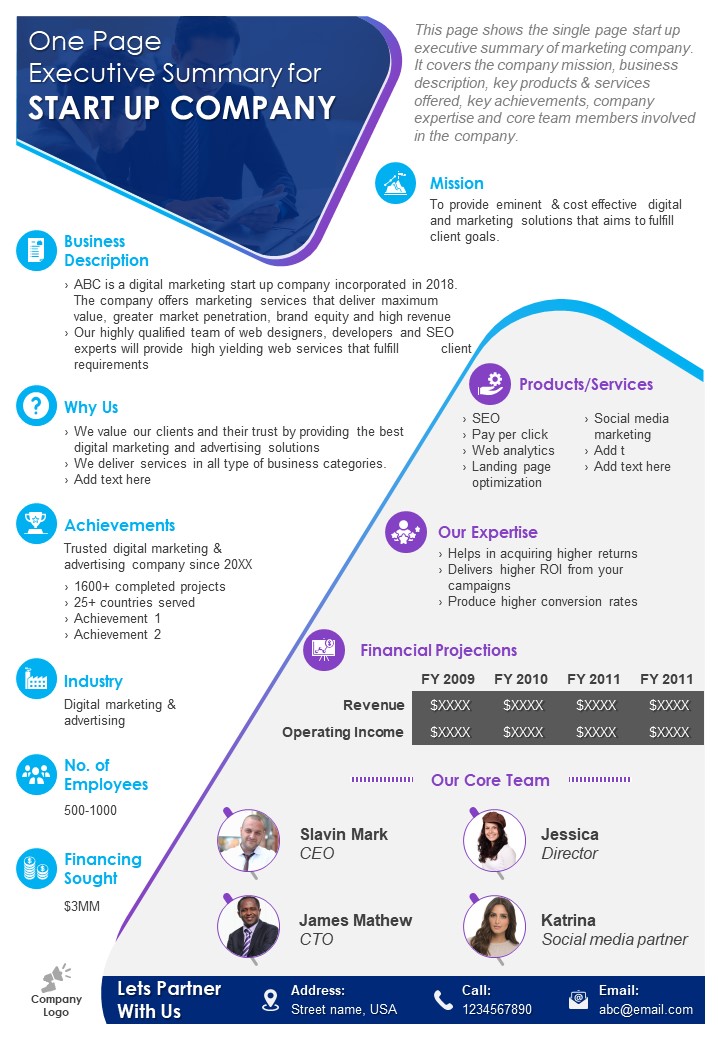
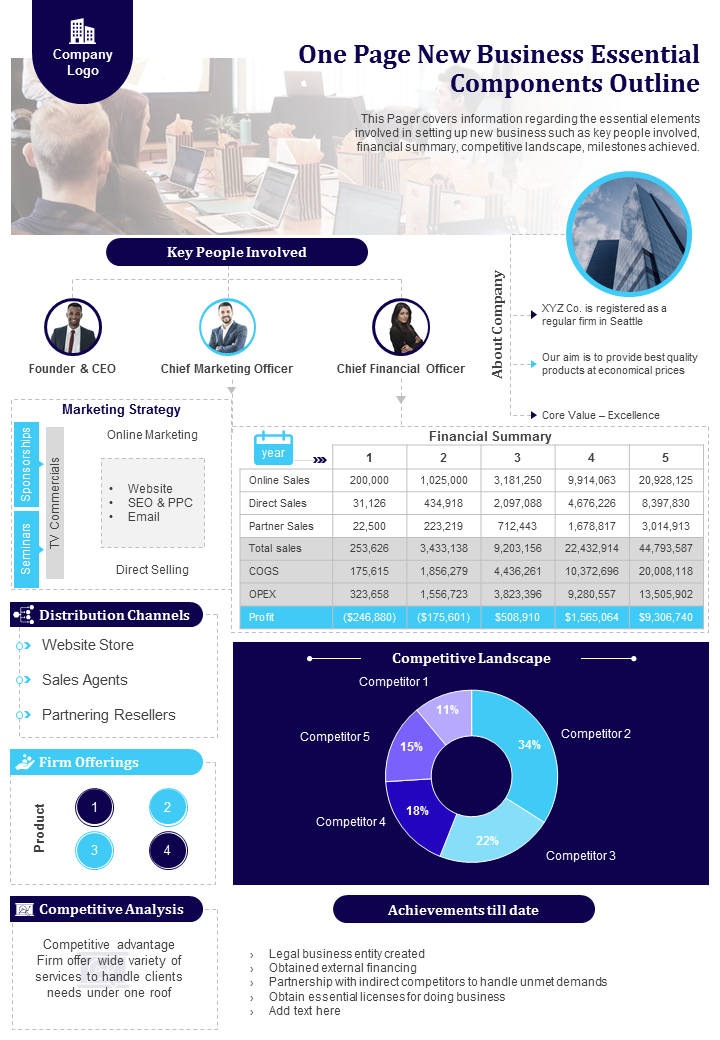

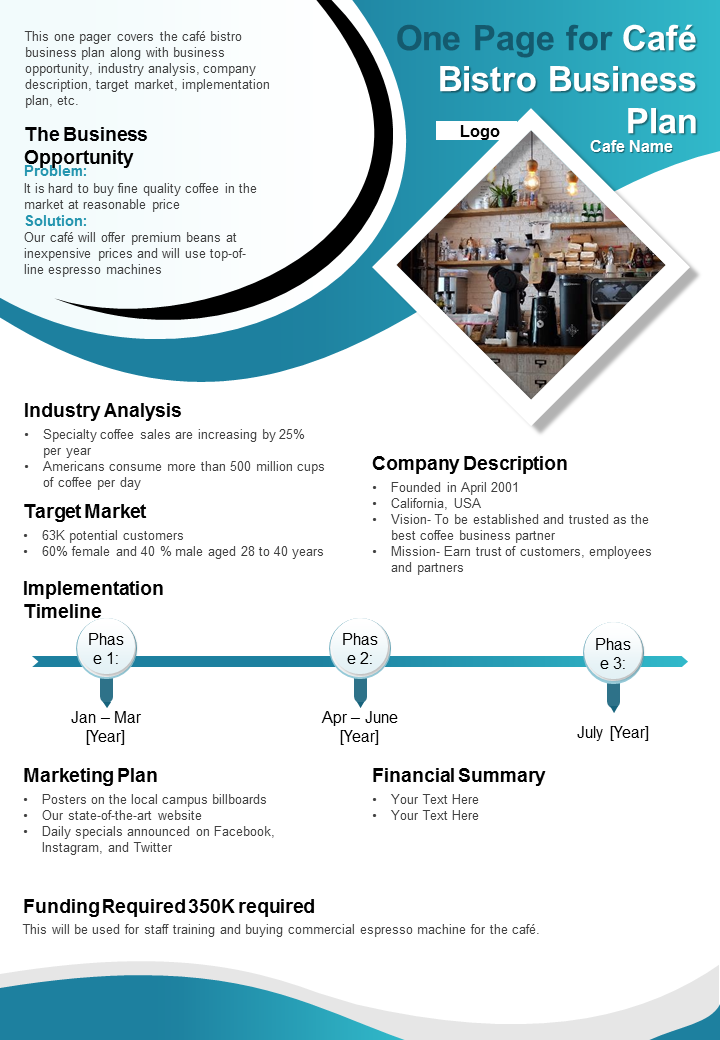

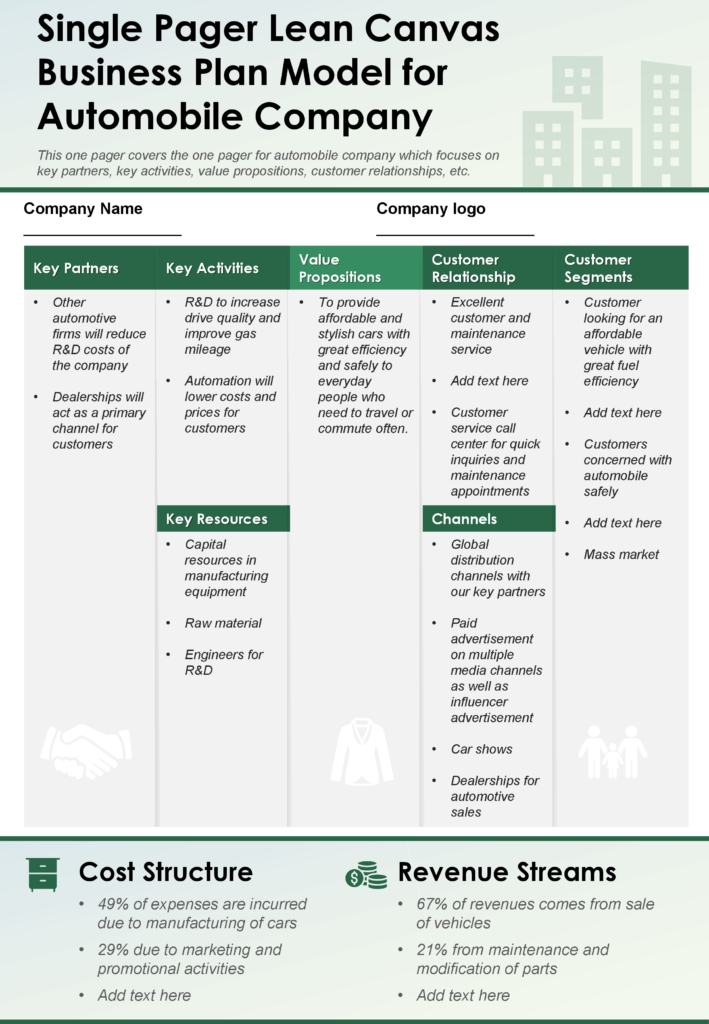

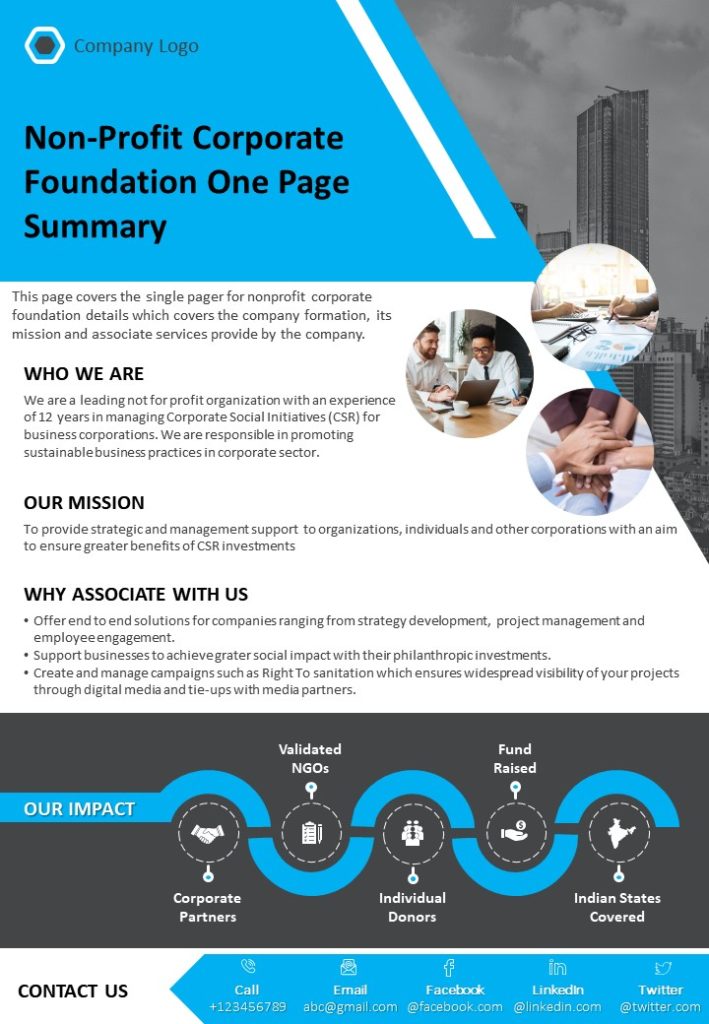
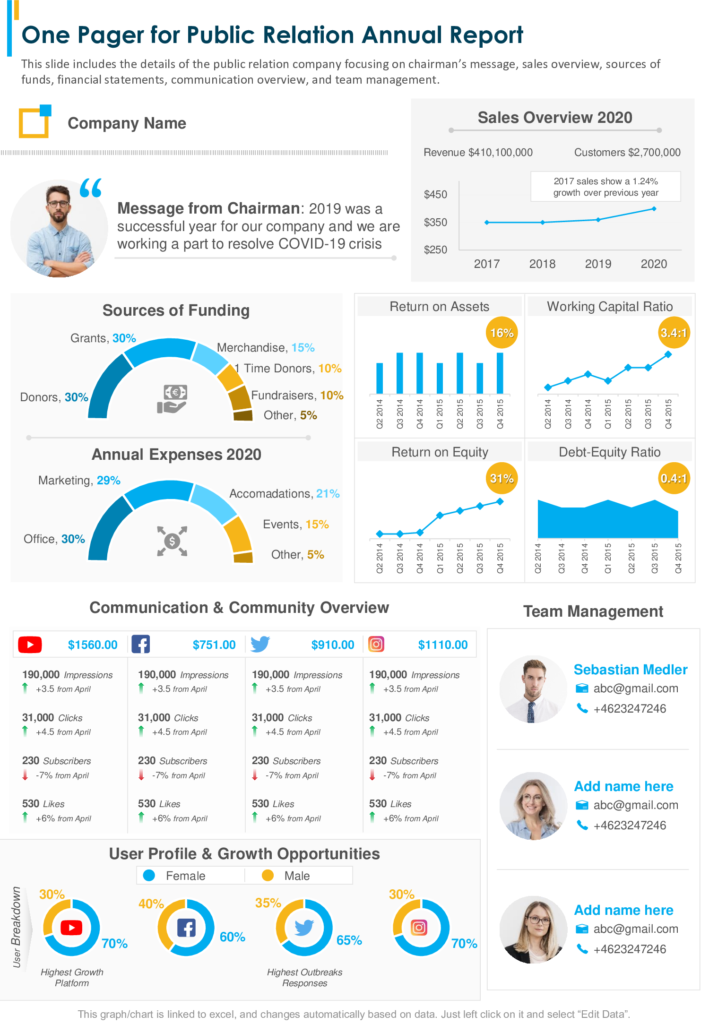
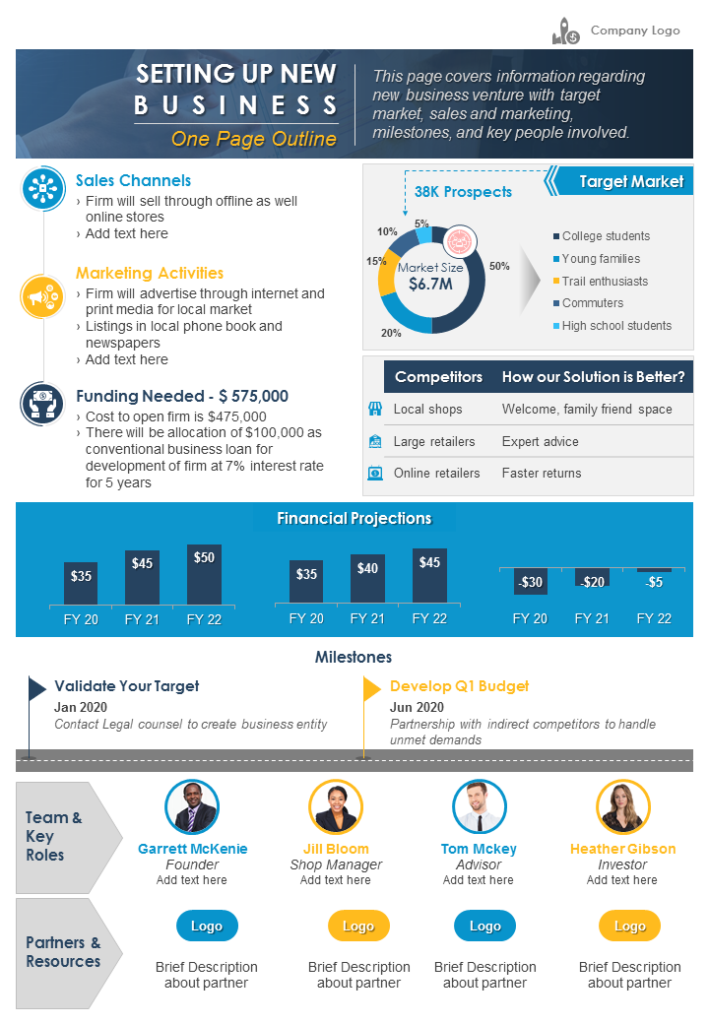
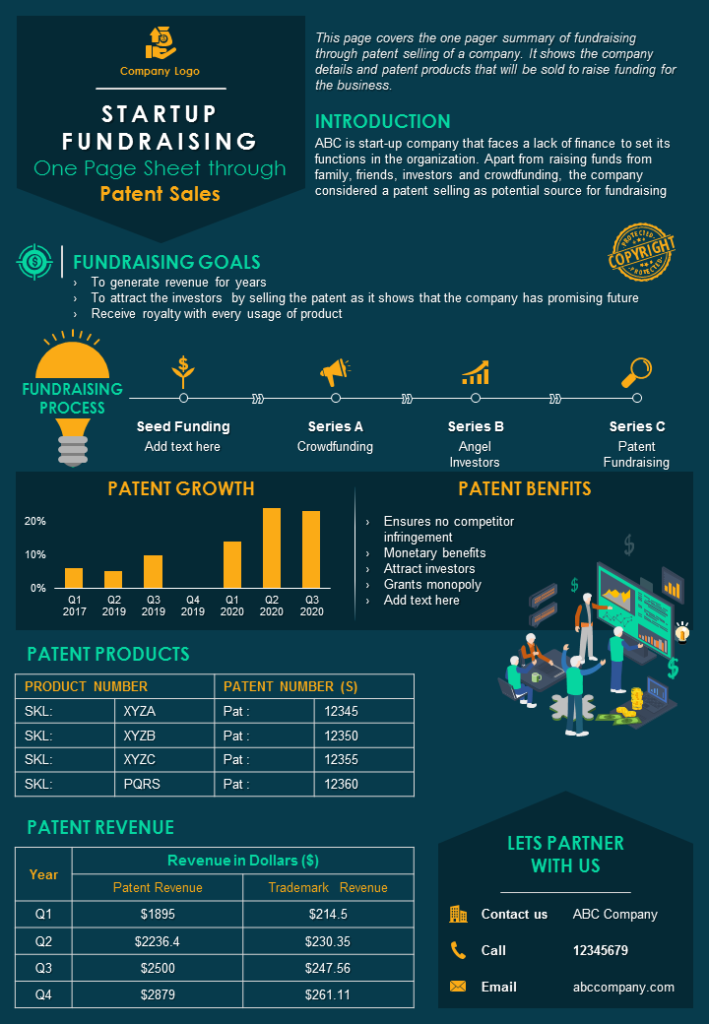
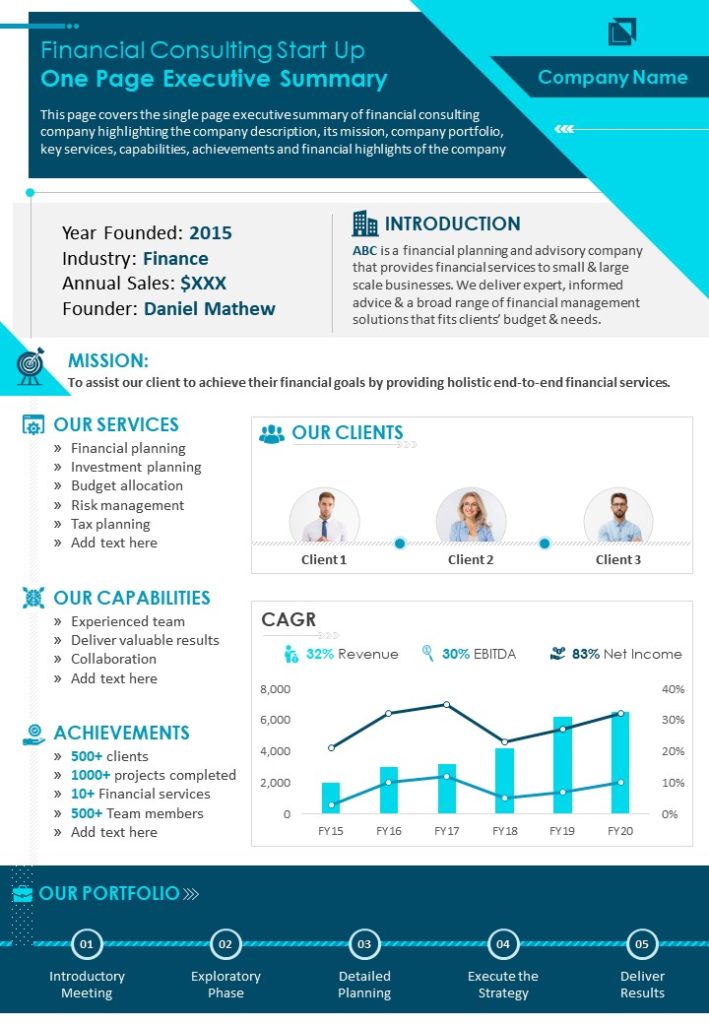


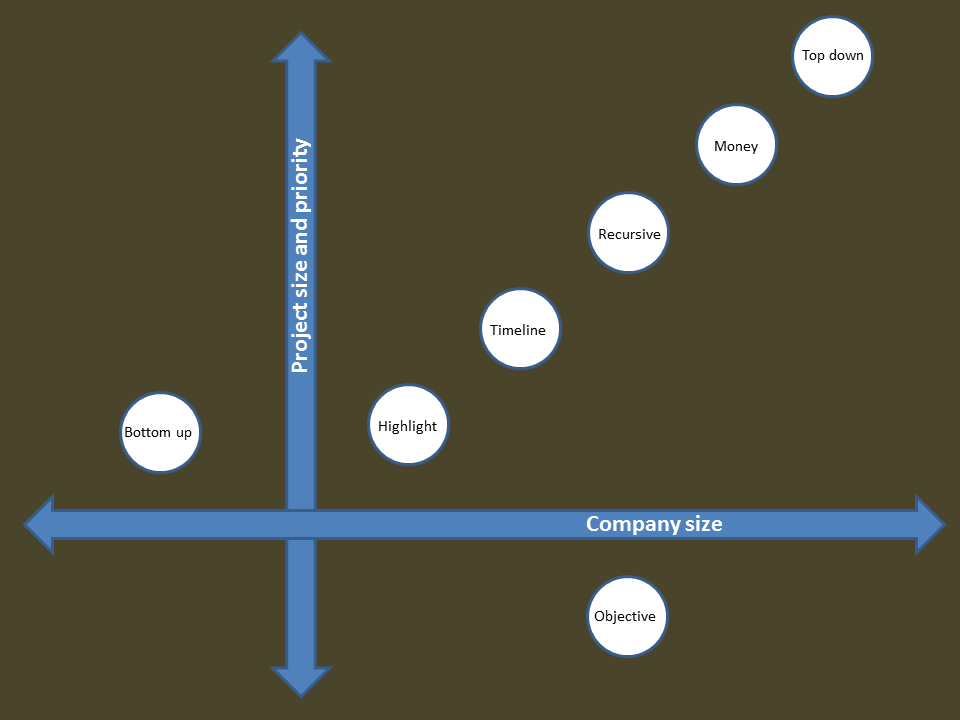



![[Updated 2023]: Top 20 Comparison PPT Templates for Effective Data Visualization](https://www.slideteam.net/wp/wp-content/uploads/2020/12/size1001-436-5-335x146.jpg)












